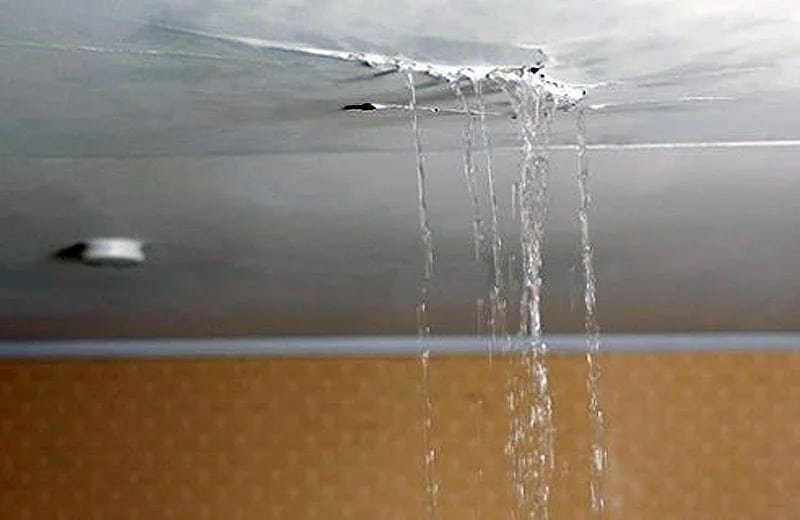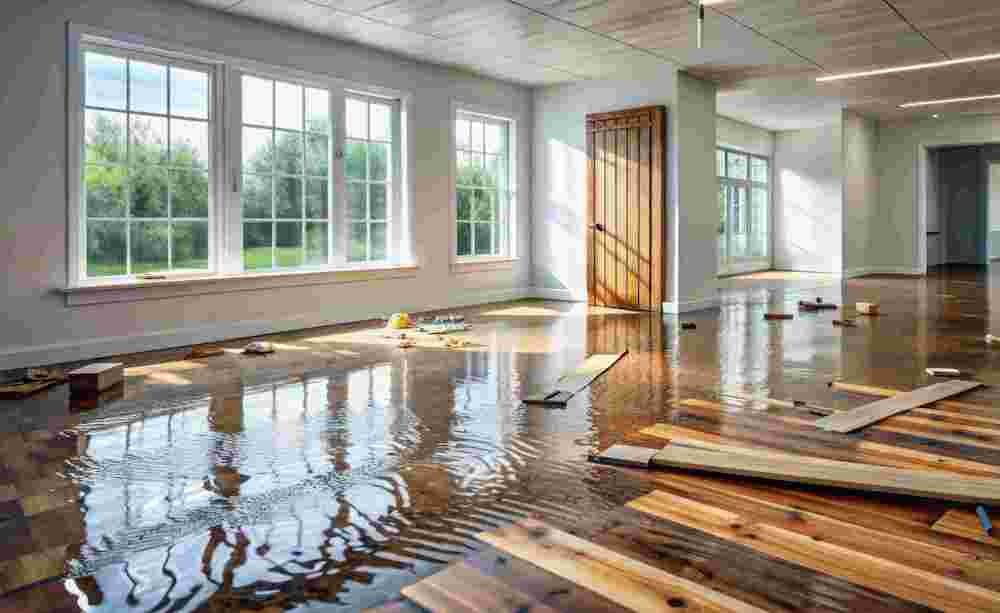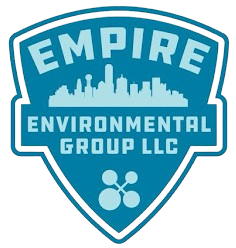Flooded basement? Leaky roof? When water infiltrates your home, your first instinct might be to roll up your sleeves and tackle it yourself. After all, renting a shop vac and some fans seems easy, affordable, and quick. Well, hold that thought. While the DIY route might seem cheaper initially, it can inadvertently cause far greater expenses, distress, and long-term damage. In this post, we’ll dive deep into why skipping the professionals on water removal isn’t always a smart move. You’ll get clear, valuable tips and real-world insight designed to empower you to make the best decision for your home and wallet.
Hidden Damage: When Surface Drying Isn’t Enough?
If you’ve ever tried to clean up a spill, you know how accessible surfaces dry fast. However, moisture is hard to detect when water seeps beneath flooring, into wall cavities, or around fixtures. Even with dozens of towels and industrial fans, you might miss pockets of lingering dampness. Over time, these hidden wet spots can lead to warped wood, peeling paint, rusted metal, and weakened structural components.
What makes this trickier is that walls and flooring often hide moisture until it’s too late. You won’t notice a sagging floorboard or peeling wallpaper until the damage is underway. On the other hand, professionals use moisture meters, thermal imaging cameras, and other advanced tools to detect even trace amounts of water. They also understand ventilation science, ensuring proper airflow reaches those concealed damp areas. In short, tackling only visible water is like treating a symptom, not curing the root cause.
Mold and Mildew: The Unseen Cost of Delay

This is the part DIYers often regret: mold. Most molds start colonizing within 24 to 48 hours of water exposure. Even if your home looks dry on the surface, mold can quietly grow behind drywall, under cabinets, or beneath carpets. Mold doesn’t just damage materials—it releases spores into your indoor air, triggering allergies, asthma, and, in severe cases, respiratory infections.
Left unchecked, mold remediation becomes far more expensive than initial professional water removal. Fungi that take root in structural wood or behind HVAC systems might require cutting out entire sections of drywall or ductwork. Professionals know how to limit cross-contamination, properly seal off work zones, and use air scrubbers and HEPA vacuums so mold spores don’t spread. It’s a complex, technical process. In contrast, the DIY route often leaves spores behind, leading to recurring mold issues—more damage, more dollars, and headaches.
Equipment and Expertise: The Real Value of Professionals
When renting a wet-dry vac, some fans, or a dehumidifier, you’re borrowing equipment, not truly owning tools. Plus, you might need several units depending on the square footage. Commercial-grade equipment used by professionals is built to handle larger moisture loads 24/7, and results speak volumes. A homeowner-grade dehumidifier might not be powerful enough to bring humidity levels back to safe ranges, especially in cold or enclosed areas.
Moreover, the actual value lies in expertise. Trained technicians assess structural risk, check water origin (like faulty plumbing vs. groundwater intrusion), and choose proper mitigation tactics. They employ drying curves and carefully monitor moisture levels over time. In contrast, DIYers often guess—turn on fans for a day, declare it dry, and walk away. Results? Often insufficient. Ultimately, combining industrial-grade hardware and professional skill saves money by preventing recurring issues, unnecessary repairs, or, worse, replacement of damaged materials.
Liability and Safety: When Shortcuts Can Hurt
Floodwater isn’t just water. It can carry pathogens, chemicals, waste, and dangerous electrical hazards, particularly from septic backups or contaminated groundwater. Professionals follow strict safety protocols: personal protective equipment (PPE), proper handling of contaminated materials, and adherence to federal and state disposal regulations.
In contrast, DIY cleanup often overlooks these hazards. Touch a hidden live wire or kneel in bacteria-laden sludge—and you’re putting yourself at risk. Worse yet, disposing of contaminated materials improperly could violate local codes and lead to fines. When you engage a certified water removal company, they assume liability, ensuring your safety and compliance. Why risk personal injury or legal consequences to save a few bucks?
Insurance Coverage: Maximizing Your Claim
Handling water removal yourself can backfire with insurance. Many homeowner policies require professional documentation—before, during, and after remediation—if you want to file a claim. Insurers might deny claims or reduce payouts without evidence of proper water mitigation, especially if they suspect damage arose from neglect or improper procedures.
On the other hand, licensed restoration companies provide detailed logs, moisture readings, and before/after photos. This paper trail strengthens your claim, ensuring you recover more in compensation, sometimes even covering extra living expenses while repairs are underway. Hiring professionals may lower out-of-pocket costs long-term and protect your investment in your home. It is a smart financial strategy, not just an added expense.
Comprehensive Restoration: Beyond Drying and Patching

Professional water removal isn’t just sucking up puddles—it’s full-spectrum restoration. After moisture extraction, a company often performs structural drying, antimicrobial treatments, material sealing, and sometimes even reconstruction. They coordinate plumbers, electricians, and general contractors if needed, ensuring you return to a proper living environment without juggling multiple vendors.
In DIY efforts, you might dry an area and slap on new paint or flooring without discovering warped joists or compromised framing behind the scenes. That short-term fix sets you up for future structural failures that cost thousands. Pro technicians guarantee systems—from plumbing and electrical to mold prevention and code compliance—are correctly restored. Ultimately, you’re paying once for quality, not multiple times for patchwork fixes.
Long-Term Health and Home Value
Sure, fixing water damage yourself may save some cash today, but at what cost to your health and home value? Lingering moisture and mold can lower indoor air quality, triggering coughing, sneezing, headaches, or worse, especially for children, older people, or anyone with respiratory conditions. Even if you don’t notice acute symptoms, ongoing damp conditions may degrade your mental well-being and peace of mind.
And don’t overlook resale value: homes with documented water damage—even if “repaired”—often appraise lower and require disclosure during sale. Future buyers may request expensive reinspections or remediation warranties, delaying or damaging your deal. In contrast, documented professional restoration adds credibility, reassures buyers, and sustains property value.
Preventative Measures: Beyond Cleanup
One of the most significant upsides of hiring professionals? They often identify underlying vulnerabilities and advise preventative upgrades. Technicians may spot cracked foundations, poor grading, failing gutters, or old sump pumps and recommend long-term solutions. As a result, future water intrusion risks decline substantially.
In contrast, DIY cleanup stops when the water disappears. Without an expert eye, the underlying cause remains unaddressed, meaning you’ll likely repeat the process, possibly worse. In other words, paying for cleanup now may save thousands later by avoiding repetitive damage cycles. So you’re not just paying to dry—you’re investing in prevention and future peace of mind.
Peace of Mind and Convenience
Finally, tackling water removal alone is exhausting, physically and mentally. Coordinating equipment rental, staying onsite for drying, ensuring moisture testing, handling mold, and worrying about insurance paperwork—it’s overwhelming. Plus, if your initial efforts fail, you’ll still hire professionals.
When you hire pros, they arrive ready to go, handle all phases, coordinate with your insurance, take care of disposal, and provide a clean, safe space to return to. That convenience and peace of mind are invaluable, especially during a stressful time. In the long run, you pay for equipment, calm, confidence, and quality assurance.
Smart Steps If You Still Choose DIY
Even though professional services are strongly recommended, if you decide to go the DIY path anyway, do it wisely:
- Act immediately. Start extraction within 24 hours using a wet/dry vac.
- Invest in hardware. Rent industrial-grade dehumidifiers and axial fans and monitor relative humidity daily.
- Confirm dryness. Use moisture meters and thermal imaging, or rent/borrow them.
- Sanitize thoroughly. Use appropriate mold/cause-specific biocides and follow label directions.
- Document everything. Take photos, temperature, and humidity readings, and keep a log—you may need it for insurance or resale.
Combining diligence, measurement, and documentation might reduce some long‑term risks. But remember: nothing replaces professional-grade assurance.
Final Thought
DIY water removal may seem like a budget-friendly option initially, but hidden water, mold growth, structural risks, insurance complications, and lost home value add up fast. Professionals bring industrial equipment, technical expertise, safety protocols, and insurance-ready documentation—saving you money, health headaches, and heartbreak. If you’re serious about protecting your home and investment, hiring a certified water removal/restoration company is not just smart—it’s essential.
FAQs
1. How quickly should I start cleanup after water damage?
Ideally, within 24 hours. Mold and structural issues begin immediately after exposure.
2. Can I handle insurance claims without hiring professionals?
Yes—but documentation is key. Missing moisture logs or photos may reduce your payout.
3. Is renting equipment enough to dry out a flooded basement?
Not if you want to be thorough. Pros use industrial-grade machinery and moisture meters for full results.
4. What’s the cost difference between DIY and professional water removal?
DIY might save hundreds upfront, but costs escalate with undetected mold, structural damage, recurring issues, or reduced home value.

